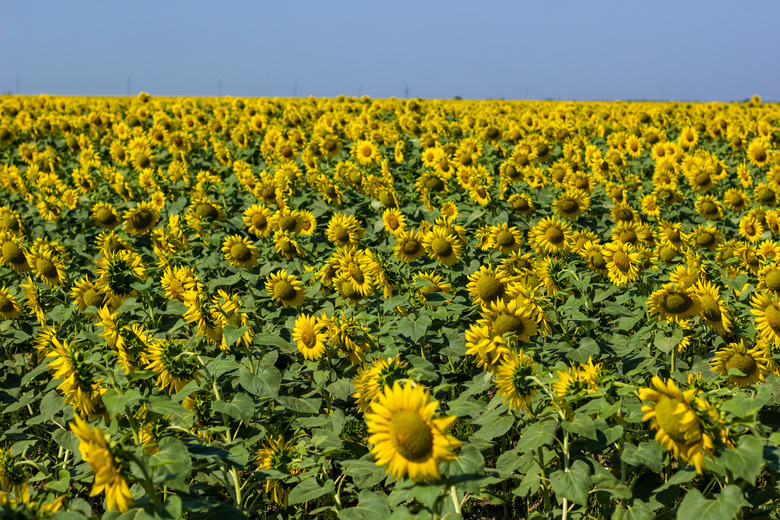The Best Time To Plant Sunflower Seeds
We may receive a commission on purchases made from links.
The next time you're munching on sunflower seeds, take a moment to pause and consider planting some of them. Annual sunflowers (Helianthus annuus) add a bold but beautiful burst of color to the garden that's hard to miss. You'll have to replant this annual every year if you wish to grow it again, but the joy that sunflowers can bring is well worth the effort. Growing them also provides tasty sunflower seeds for you, birds, rabbits and other woodland creatures to munch on.
When to Plant Sunflower Seeds
When to Plant Sunflower Seeds
Sunflowers are all about warm, sunny days, so you don't want to jump the gun and plant them too early in the spring. Because they need only between 70 and 100 days to reach maturity, gardeners in U.S. Department of Agriculture plant hardiness zones 2 and above can all grow them — even where summers are short.
The seeds of the sunflower plant germinate in the spring or summer when the soil temperature reaches 70 to 85 degrees Fahrenheit. To hit this window, you'll want to sow your seeds just before this happens, when the soil temperature warms to at least 60 F.
Although it can vary by location and microclimate, this usually means sowing seeds around three weeks after the last frost in your area. Gardeners in the North may have to wait and get their sunflowers started between April and July. Those further south can often sow seeds as early as March or April.
When to Harvest Sunflower Blooms
When to Harvest Sunflower Blooms
Many gardeners love sunflowers so much that they use them as cut flowers so they can enjoy them indoors and out. Technically, you can cut a flower from your plant and enjoy it inside at any time. For the best results, however, cut flowers for your bouquets at the base of the main stem just before they open. This way the bloom will open in your vase and the resulting blossom will last longer.
It's best to cut your flowers in the morning before the heat of the day. Get them in a vase immediately after cutting and be sure the vase you choose is tall. Sunflowers are often top-heavy and need adequate support to keep their heads from drooping. Change the water in your vase every day to keep it fresh.
When to Harvest Sunflower Seeds
When to Harvest Sunflower Seeds
Some gardeners harvest sunflower seeds to roast and eat later. Others save them so they can plant sunflowers again next spring. Sunflower seeds come ready to harvest as the blooms fade, and your plant will let you know when it's time. The back of the sunflower blossom will turn brown, the flower petals will die, the leaves will yellow and the seeds in the center of each flower will start to look as if they're going to jump right off the plant.
You can allow this natural process to happen outside on its own. If you want to make sure you get more sunflower seeds than the birds, however, you may want to cut the sunflower blooms off the plant and dry them inside. You can also cover the flowers with mesh bags to keep birds out.
When the seeds are ready, spread out a towel and brush the seeds onto it. You can do this with your hand, a fork or an old washboard. Gather your seeds, rinse them well and spread them out to dry. When they have, store them in an airtight container.
